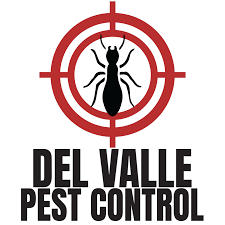Pests are a common problem in both residential and commercial settings, causing damage to property, spreading diseases, and creating discomfort for occupants. Effective pest control is essential for maintaining a healthy living environment, ensuring food safety, and protecting the integrity of buildings. This article will explore various pest types, the importance of pest control, and effective strategies for managing and preventing infestations.
Understanding Common Pests
Pests can be classified into several categories, each presenting unique challenges and risks:
- Rodents: Common rodents include mice and rats, which can contaminate food supplies, spread diseases, and cause structural damage by gnawing on wires and insulation.
- Insects: Insects encompass a wide range of pests, including ants, cockroaches, termites, and bedbugs. Each type has specific behaviors and habitats that affect how they invade homes or businesses. For instance, termites can cause significant damage to wooden structures, while bedbugs feed on human blood, leading to discomfort and anxiety.
- Wildlife: Larger pests, such as raccoons, squirrels, and birds, can invade attics, basements, and gardens. They can create noise, damage insulation, and transmit diseases.
- Weeds: While often overlooked, invasive plant species can disrupt garden ecosystems, compete with desired plants for nutrients, and harbor pests.
The Importance of Pest Control
Pest control is not merely about eliminating nuisances; it plays a crucial role in public health and safety. Here are some reasons why effective pest management is essential:
- Health Risks: Many pests are known vectors for diseases. For example, rodents can carry hantavirus and leptospirosis, while mosquitoes transmit West Nile virus and dengue fever. By controlling pest populations, we can reduce the risk of disease transmission.
- Property Damage: Pests can cause significant financial losses. Termites alone cause billions of dollars in damage each year in the United States. Effective pest control helps protect investments in homes, businesses, and personal property.
- Food Safety: Insects and rodents are notorious for contaminating food supplies. For restaurants and food processing facilities, pest control is essential for compliance with health regulations and maintaining customer trust.
- Quality of Life: Pests can significantly impact our daily lives, causing stress and discomfort. Effective pest control measures improve the quality of life by creating safer, healthier living environments.
Effective Pest Control Strategies
Pest control involves a combination of preventive measures, monitoring, and treatment options. Here are some effective strategies for managing pests:
1. Prevention
Preventing pest infestations is the first line of defense. Here are key preventive measures:
- Seal Entry Points: Inspect your home or business for gaps, cracks, and openings where pests can enter. Use caulk to seal these openings, especially around windows, doors, and utility lines.
- Maintain Cleanliness: Regular cleaning helps eliminate food sources and hiding spots for pests. Keep kitchens, dining areas, and storage spaces free from crumbs and spills. Store food in airtight containers and dispose of garbage regularly.
- Reduce Clutter: Pests thrive in cluttered environments. Organize storage areas and reduce unnecessary items that provide hiding places for pests.
- Proper Landscaping: Trim trees, shrubs, and vegetation that touch buildings, as these can serve as pathways for pests. Ensure proper drainage in yards to eliminate standing water, which attracts mosquitoes.
2. Monitoring and Identification
Regular monitoring is essential for early detection of pest problems. This can include:
- Routine Inspections: Conduct regular inspections of your property to identify signs of pest activity, such as droppings, nests, or damage. Early detection can help prevent infestations from escalating.
- Use of Traps: Set up traps in strategic locations to monitor pest populations. Sticky traps can capture insects, while snap traps can catch rodents. Regularly check and replace traps as needed.
- Professional Inspections: Consider hiring a pest control professional for periodic inspections. They can identify hidden infestations and provide expert recommendations.
3. Treatment Options
If a pest infestation occurs, there are several treatment options available:
- Chemical Treatments: Pesticides can be effective for controlling various pests. However, it’s important to choose the right product for the specific pest and follow all safety guidelines. Always consider non-toxic alternatives when possible, especially in homes with children or pets.
- Biological Control: This method involves using natural predators or parasites to control pest populations. For example, introducing ladybugs can help manage aphid populations in gardens.
- Integrated Pest Management (IPM): IPM is a holistic approach that combines prevention, monitoring, and treatment. It focuses on long-term solutions by addressing the root causes of pest problems rather than relying solely on chemical treatments. IPM emphasizes the use of non-chemical methods whenever possible and considers the life cycles and behaviors of pests.
- Professional Pest Control Services: For significant infestations or persistent problems, it may be necessary to hire a professional pest control service. These experts can assess the situation, develop a tailored pest management plan, and provide ongoing monitoring and treatments.
4. Education and Awareness
Educating yourself and others about pests and pest control is essential for maintaining a pest-free environment. This includes:
- Staying Informed: Keep up-to-date on common pests in your area and seasonal trends. Knowing when pests are most active can help you prepare.
- Community Initiatives: Participate in community programs that promote pest control awareness, such as neighborhood clean-up days, educational workshops, or community gardens. Collective efforts can significantly reduce pest populations in an area.
Conclusion
Effective pest control is crucial for protecting health, property, and quality of life. By implementing preventive measures, conducting regular monitoring, and employing appropriate treatment strategies, individuals and businesses can manage pest populations effectively. Understanding the types of pests and their behaviors is key to creating an environment that minimizes infestations. Ultimately, a proactive approach to pest control not only safeguards against the immediate threats posed by pests but also promotes long-term health and well-being.


